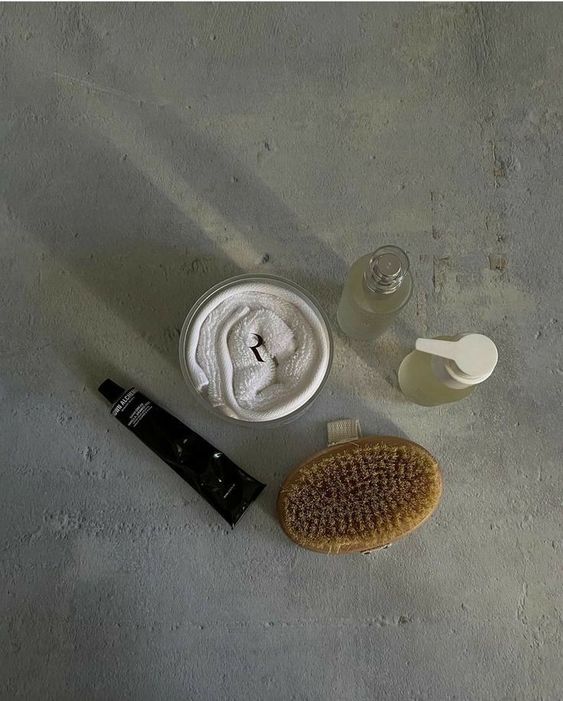
The pandemic has created a new need which is wearing face masks to both protect ourselves and everyone around us from COVID-19. It never crossed our minds that this simple and life-saving habit could wreak havoc on our skin.
Understanding The Nuts and Bolts About Maskne
As days go by, more and more people are suffering from acne related to face masks. This form of acne has been called maskne and it affects mainly the cheeks, chin, and nose. Patients reported developing blackheads, zits, papules and pustules. Although rare, the last 2 can progress into nodules and cysts.
Maskne usually appears on people who have already been suffering from acne (so their condition worsened) or those who have an oily complexion. Maskne forms as a result of constant friction caused by the facemask, since most masks are made with synthetic fabrics. Also, wearing them for several hours produces an occlusive layer of sweat and sebum that irritates the skin.
Although the term maskne is new, this type of acne falls under the category of acne mechanica.
According to the Journal Dermatology Times:“Acne mechanica is a form of acne that is triggered when the skin is pressed or rubbed against heavy clothing or bulky protective gear”[1].
So, the constant friction, rubbing and occlusion produces an inflammatory response which, in turn, results in acne breakouts. Acne mechanica is more common among athletes, soldiers, drivers, hospital patients, and people who wear prosthetic limbs.
Given the nature of this type of acne, antibiotics do not constitute an effective treatment against it. However, a dramatic improvement, or even a complete resolution, can be experienced once the person stops being exposed to the rubbing/pressing/occlusive agent.
And that is exactly the maskne dilemma: if we discontinue the use of face masks, the breakouts will likely heal, but we will considerably increase our chances of contracting the COVID-19 infection.
Recognizing the Ins and Outs About Maskitis
Maskne is not the only issue related to face masks, though. Other people have developed severe redness and even a skin rash. So, we can also affirm that face masks could potentially cause contact dermatitis or, as we have called it, maskitis.
Since the inflammatory/irritating agent (face masks) can't be discontinued, you might be wondering if there is anything that can be done to keep these conditions under control. Do not panic, it is absolutely possible to regain your skin health. Here are a few methods you can carry through to prevent and treat both maskne and maskitis:
Maskne Remedy: Step By Step Treatment Program
- Cleanse your skin with a natural, mildly acidic (4.5-5.5) foaming formula. Favor products that contain keratolytic (break down excess keratin on the surface of the skin) actives such as papain, bromelain, and salicylic acid derived from willow bark or wintergreen.
- Remove the sweat and surface buildup immediately after taking off the mask. You can use a natural micellar cleanser or saline solution for this purpose.
- Try to take a 15-minute face mask break every 4 hours or so.
- Replace the synthetic face masks with those made from organic cotton, satin, or silk (with added anti-COVID filters). For extra protection, you can also wear a face shield.
- Make sure you wash your facemasks on a daily basis with a gentle soap (Castille soap works really well).
- Exfoliate your skin 2 times per week, provided it is not severely inflamed or infected.
- Treat your face to a detoxifying mask 1-2 times per week. Ingredients like activated charcoal, apple cider vinegar, clary sage, rhassoul, tea tree oil, lactobacillus/bifida ferment lysates, manuka honey, peppermint, rosemary, and witch hazel will help purify the skin and heal already existing breakouts.
- Avoid wearing makeup under your face mask.
- Please, do not pick your skin.
- Refrain from exercising with the mask on. This will only exacerbate the problem, as there will be extra friction and sweat. Opt for exercising at home, outdoors, or in places where there is enough space between people.
- The best way to protect your skin against constant friction is by applying a lubricating agent. In this case, we are talking about a hydrating serum and a moisturizer. Look for formulas that contain niacinamide (vitamin B3, pantothenic acid (vitamin B5) aloe vera, algae/seaweed, vegetable hyaluronic acid, vegetable glycerin, sugars (like trehalose), and low molecular carrier oils (argan, grapeseed, jojoba, tamanu, sesame, sunflower, hemp, and rosehip).
- Do not forget to apply during the day a natural SPF, made with titanium dioxide and/or zinc oxide, to shield your skin against UV radiation.
Maskitis Remedy: Step By Step Treatment Program
- Cleanse your skin with a natural, mildly acidic (4.5-5.5) milky or creamy formula.
- Favor products that contain ultra-soothing actives such as allantoin, arnica, calendula, colloidal oatmeal, chamomile, green tea, honey, licorice, milk (or coconut milk), lactobacillus/bifida ferment lysate, carrot seed oil, and turmeric.
- Remove the sweat and surface buildup immediately after taking off the mask with a natural micellar cleanser.
- Try to take a 15-minute face mask break every 4 hours or so.
- Replace the synthetic face masks with those made from organic cotton, satin, or silk (with added anti-COVID filters). For extra protection, you can also wear a face shield.
- Make sure you wash your facemasks on a daily basis with a gentle soap (Castille soap works really well).
- As long as your face is irritated, do not exfoliate your skin. Instead, treat your skin 1-2 per week with a facial mask that contains any of the ingredients recommended in number 2.
- If your skin broke out in a rash, do not scratch it.
- Avoid wearing makeup under your face mask.
- Refrain from exercising with the mask on. This will only exacerbate the problem, as there will be extra friction and sweat. Opt for exercising at home, outdoors, or in places where there is enough space between people.
- Protect your skin against the constant friction by applying a lubricating agent. In this case, we are talking about a super hydrating serum and a moisturizer. Look for formulas that contain niacinamide (vitamin B3, pantothenic acid (vitamin B5) aloe vera, algae/seaweed, vegetable hyaluronic acid, vegetable glycerin, sugars (like trehalose), and anti-inflammatory carrier oils (sweet almond, apricot kernel, avocado, argan, hemp, rosehip and evening primrose).
- Do not forget to apply during the day a natural SPF, made with titanium dioxide and/or zinc oxide, to shield your skin against UV radiation.
Now that you know the difference between maskne and maskitis and tips on how to avoid them, you are ready to get started!
Make sure to be responsible for yourself and others and remember, if the symptoms of maskne or maskitis persist, please consult your dermatologist.
Reference
[1] https://www.dermatologytimes.com/view/acne-mechanica-caused-skin-skin-friction




